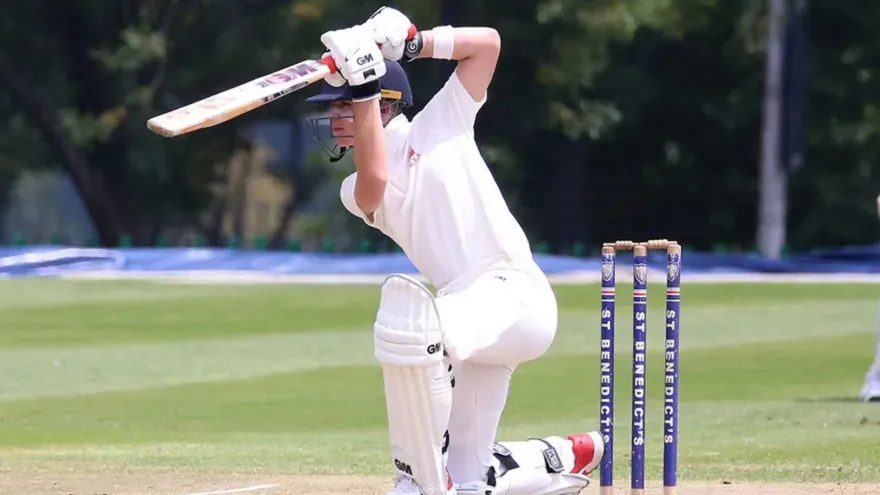“Cricket is a game of angles, precision, and strategy, and nowhere is this more evident than in the art of field placements.”
Imagine you're watching a cricket match, and the commentator says, “The captain has placed a short backward square leg and a deep fine leg.” If you’re new to the game, it might feel like they’re speaking a foreign language! But don’t worry—understanding cricket fielding positions isn’t as complicated as it sounds.
In this beginner-friendly guide, we’ll break down all the major fielding positions in cricket, helping you decode them. Whether you're a budding cricketer, an enthusiastic fan, or someone trying to make sense of the commentary, this guide will ensure you never feel lost on the cricket field.
By the end of this article, you will be able to recognize the various cricket fielding positions. Let’s dive in!
What Are Cricket Fielding Positions?
Fielding positions in cricket determine where players are stationed on the field. These positions are strategically assigned to stop runs or catch the ball.

On Side vs. Off Side
Cricket fielding positions are divided into two main categories:
On Side (Leg Side): The right side of the batsman when facing the bowler.
Off Side: The left side of the batsman when facing the bowler.

Understanding these sides is fundamental before diving into specific fielding positions.
Slip Fielders: The Key to Catching Edges
Slip fielders are placed behind the batsman at an angle, ready to catch balls that edge off the bat. These positions are named as follows:

First Slip: Positioned closest to the wicketkeeper.
Second Slip: Next to the first slip.
Third Slip: Further away from the first slip, completing the arc of slips.
Leg Slip and Fly Slip

Leg Slip: Positioned on the leg side near the wicketkeeper.
Fly Slip: Positioned further away, near the 30-yard circle.

Cover and Point Positions in Cricket
These positions are critical on the off side to stop or intercept balls hit in the covers.
Cover Point: Positioned close to the batsman on the offside.
Extra Cover: Wider than the cover point.
Deep Cover: Near the boundary on the offside.
Deep Extra Cover: A deeper version of extra cover, ideal for stopping powerful drives.

Square and Leg Side Fielding Positions
Square Leg: Positioned at a 90-degree angle to the batsman.
Deep Square Leg: Near the boundary in line with the square leg.
Short Backward Square Leg: Slightly behind the square leg and closer to the batsman.
Deep Backward Square Leg: Positioned near the boundary behind short backward square leg.
- Short Leg: Close-in fielding position near the batsman on the leg side.

Silly Fielding Positions: Up Close and Personal
Silly Point: Positioned dangerously close to the batsman, perpendicular to the pitch.
Silly Mid-On: Close to the batsman on the leg side.
Silly Mid-Off: Close to the batsman on the offside.

Midwicket and Fine Leg Positions
Midwicket: Positioned between mid-on and square leg.
Deep Midwicket: Near the boundary, aligned with midwicket.
Fine Leg: Positioned behind the square leg, near the boundary.
Short Fine Leg: Closer to the batsman near the 30-yard circle.

Mid Positions: Mid-On and Mid-Off Explained
Mid-On: Positioned close to the bowler on the leg side.
Mid-Off: Positioned close to the bowler on the offside.
Short Mid-On and Short Mid-Off: Closer to the batsman than their standard counterparts.
Long Positions: Defending the Boundary
Long-On: Near the boundary in line with mid-on.
Long-Off: Near the boundary in line with mid-off.

Other Key Fielding Positions
Wicketkeeper
Positioned directly behind the stumps to catch the ball and effect stumpings.
Point and Gully
Point: Perpendicular to the batsman on the offside.
Backward Point: Slightly behind the point position.
Gully: Positioned between the slips and point, ideal for catching edges.
Third Man
Near the boundary on the offside behind the wicketkeeper.
Cow Corner
Positioned between long-on and deep midwicket, often for big hitters.

FAQs on Cricket Fielding Positions
What are the key positions in cricket?
The main positions include slips, point, mid-on, mid-off, square leg, and fine leg.
Why is it called a silly point?
The term “silly” refers to the perceived danger of standing so close to the batsman.
What is the difference between a fine leg and a square leg?
The fine leg is positioned behind the batsman on the leg side, while the square leg is at a 90-degree angle to the batsman.
This guide simplifies cricket fielding positions for beginners. Bookmark it for quick reference and share it with your cricket-loving friends. Understanding these positions will make watching and playing cricket far more enjoyable.
Learn, play, and talk cricket like a pro!















